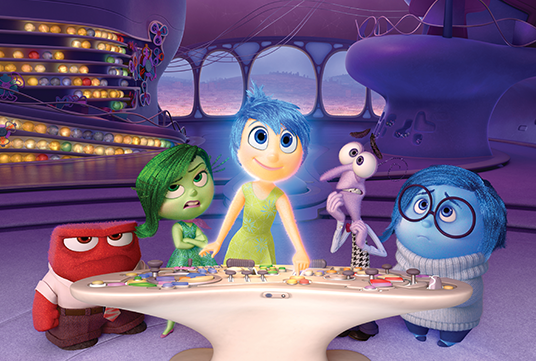Personification is a literary device so commonplace that it shows up everywhere in our language. The dictionary definition of personification is “to attribute personal or human qualities to something that wouldn’t have those qualities otherwise.”
We use it when we say that our phone died or a piece of art spoke to us or the sun smiled down on the day. These little turns of phrase serve, in our actual life, to make the world a bit more human and to remind us that the world is as alive as we are. So how do we bring this literary tool to our writing without sounding cliché? In this article, I will explore how you can convey emotions through the use and
Personification gives human qualities to nonhuman things, allowing you to express emotion, mood, and theme indirectly through the world around your characters. By using personification intentionally—in sentences and in character design—you can deepen emotions, reveal inner thoughts, and embody big ideas without resorting to cliché. It’s a key tool in “show, don’t tell.”
Table of Contents
How to show emotion through personification
To make personification work for your writing, it needs to be a tool and not a crutch.
The prose of an unseasoned writer sometimes tends to be overly lush and brimming with literary devices (like personification). It makes sense; these are exciting tools and an excited writer uses all of them indiscriminately. The character wakes up to the alarm yelling and eats a breakfast that’s waiting for him downstairs.
To take a step forward in our work, however, we need to consider the effect personification has on the reader’s perception of the imagined world.
Try to think about the moments in your life when the world felt alive and human to you. It can be in those times when the coffee is perfectly warm and the daily events that pass before your eyes are full of humor. Even in moments of heartbreak or loss, the world is especially vivid. As you cry, the trees seem to weep with you and clouds form in the sky above. These are the moments, for better or worse, that we feel most alive.

On the other hand, there are times when the world is especially dead to us. You may be experiencing a bit of disassociation in the drudgery of the day. In times of depression or instability, the world seems alien and cold. As we withdraw from the outside world, the world too seems to withdraw from us. There’s no way the wind could whisper or the shadows could dance in times like this. A tree could fall right next to us in the forest and it wouldn’t make a sound…because we’re not listening.
Employing the tool of personification is really the art of showing the reader an emotion without telling them.
We don’t need to hear that a character is youthful or vibrant; the way you describe a world bursting with life is enough.
We don’t need to be told that someone is burnt out or jaded; choose some shorter sentences and strip back the personification. The coffee is hot or cold, not inviting or bitter. The weather is the weather, not a reflection of one’s inner state. The sparse language and tone will communicate to us how the character feels.
Even the absence of personification, considering how common it is in language, is using the tool.
“Love conquers all. Let love then smile at our defeat.”
– Virgil
Character creation with personification
Another way to approach personification is to extend its definition beyond the construction of your sentences and allow it to enter the way you form your characters themselves.
Part of what makes historical figures and famous icons so interesting to us is the way that they seem to embody bigger ideas. Indeed, they’re the personification of justice, evil, style, grace, and power.
When someone reaches a certain level of technical skill in something, you might reference them with a shorthand term for the idea. Calling someone an “Einstein” is to call them brilliant or, if we’re being sarcastic, an egghead. Mother Theresa, in the world’s perception, is perhaps even more an image of kindness than the person she actually was.
Your characters, for all their human attributes, can be thought of in similar ways.
You might be writing a story that has no place for grandiose ideas. Some literature is focused on deeply interpersonal relationships and the way those unfold. Nearly every story with a discernible plot, however, requires a character to play the role of a force.
The antagonist embodies a certain negative energy. They may be a conservative force resisting change in the story of a rebellion. They might want to defile the pure love of the main characters, and our protagonists have to protect their relationship.
So what do your characters personify? They probably can’t be simplified to words like “good” or “evil,” because they’re more complex than that. Still, it’s a worthy exercise to entertain the qualities that they embody.

As the architect of your story, you’re presenting a world in which certain values either win or lose. You may be telling a story where innocence is not a virtue, and your protagonists are the ones who make the hard choices. Or you might be presenting a world in which everyone’s too bitter, and a character who enters the scene with purity wins their hearts and minds.
The way that you entertain these ideas and make your character’s motivations central to their way of living defines the way your plot unfolds.
In some of the best told stories, every character is sympathetic in that they each have a valid argument for why they are doing what they are doing. In other words, on a primal level, every character wants the same thing, and it is this uniformity of desire that ironically creates the conflict in your story.
Take freedom, for example. Bill and Sally, a married couple, might both be seeking freedom, but if Bill believes freedom comes from making millions of dollars, while Sally believes they will be free when they give up all worldly possessions, we have now arrived at the dilemma central to the story. By investigating Bill and Sally’s journey, we will be led to a deeper understanding of what freedom means.
By allowing your characters to represent primal forces, your story enters the sphere of idea. What happens when they meet? What can we, as people, learn from watching these virtues battle it out?
Your story weapon: Personification exercise
One of the most powerful aspects of humanity is that we share our awareness through the act of telling stories. When we feel especially alive, the objects around us take on a life of their own.
As you experiment with personification in your sentences and in your character creation, be ambitious.
Here’s an exercise to build your awareness: list ten traits belonging to human beings.
For example: listening, speaking, hearing, waiting, walking, sprinting, fingering, kneeling, frowning, weeping, sighing, etc.
And now list ten nouns, for example: house, paper, pencil, duck, trash bin, bank, car, couch, birthday card, trousers, etc.
Now play with these two lists and see what interesting combinations emerge, such as:
- The house was listening for intruders.
- As he moved his hand across the page, his pencil wept words of despair.
- She sat down hard on the couch, and the cushion sighed with relief.
I’ll leave you with these words from Faulkner in his Nobel Prize acceptance speech in 1949, where he reminds us to look beyond our fears in the physical world and write on “problems of the spirit” to connect with our readers.
[…] the young man or woman writing today has forgotten the problems of the human heart in conflict with itself which alone can make good writing because only that is worth writing about, worth the agony and the sweat.
[They] must learn them again. [They] must teach [themselves] that the basest of all things is to be afraid; and, teaching [themselves] that, forget it forever, leaving no room in [their] workshop for anything but the old verities and truths of the heart, the old universal truths lacking which any story is ephemeral and doomed – love and honor and pity and pride and compassion and sacrifice. Until [they do] so, [they labor] under a curse. [They write] not of love but of lust, of defeats in which nobody loses anything of value, of victories without hope and, worst of all, without pity or compassion. [Their] griefs grieve on no universal bones, leaving no scars. [They write] not of the heart but of the glands.
Get down to the primal desires of your characters. There are many different tools you can use along with personification to express your story. Learn more in my workshops: The 90-Day Novel, The 90-Day Memoir, Story Day







